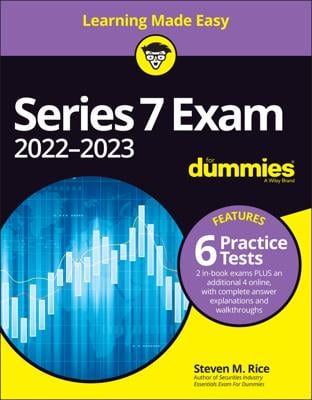Unless the securities are exempt from registration, the issuer has to go through a registration process with the SEC. The Series 7 tests you on the following items that relate to securities registration.
Cooling-off period
After the issuer files a registration statement (the filing date) with the SEC, a 20-day cooling-off period begins. During the 20-day (and often longer) cooling-off period, the good old SEC reviews the registration statement. At the end of the cooling-off period, the issue will (hopefully) be cleared for sale to the public (the effective date of registration).
During the cooling-off period, the underwriter (or underwriters) can obtain indications of interest from investors who may want to purchase the issue. Registered reps (like you in the not-too-distant future) scramble to get indications of interest from prospective purchasers of the securities.
Indications of interest aren’t binding on customers or underwriters. A customer always has the prerogative to change his mind, and underwriters may not have enough shares available to meet everyone’s needs.
A tombstone ad — a newspaper ad that’s shaped like a, well, tombstone (it’s rectangular with black borders) — is simply an announcement (not an offer) of a new security for sale. It’s the only advertisement allowed during the cooling-off period. These ads contain just a simple statement of facts about the new issue (for example, the issuer, type of security, amount of shares or bonds available, underwriter’s name, and so on).
In addition, tombstone ads often provide investors with information about how to obtain a prospectus. Tombstone ads are optional.
Underwriters and selling group members use the preliminary prospectus to obtain indications of interest from prospective customers. The preliminary prospectus must be made available to all customers who are interested in the new issue during the cooling-off period.
Due diligence meeting
Toward the end of the cooling-off period, the underwriter holds a due diligence meeting. During this meeting, the underwriter provides information about the issue and what the issuer will use the proceeds of the sale for. This meeting is designed to provide such information to syndicate members, selling groups, brokers, analysts, institutions, and so on.
The last time syndicate members can back out of an underwriting agreement is toward the end of the cooling-off period (around the time of the due diligence meeting). You can assume that if syndicate members are backing out, it’s most likely due to negative market conditions.

